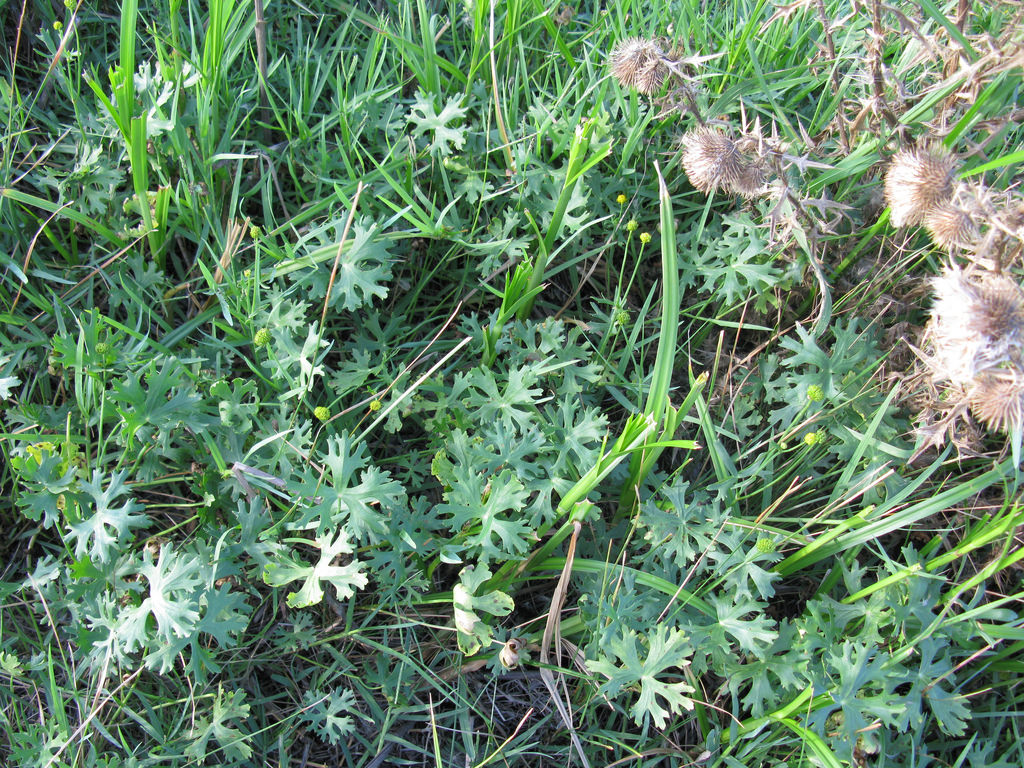Wavy buttercup
(Ranunculus undosus)

Description
Ranunculus undosus, commonly known as the Wavy Buttercup, is a captivating flowering plant that belongs to the Ranunculaceae family. This perennial herbaceous species is native to North America, where it can be found in diverse habitats ranging from wet meadows to forest edges. Its unique characteristics and stunning blooms have made it a favorite among gardeners and plant enthusiasts. In this article, we will delve into the intricacies of Ranunculus undosus, exploring its taxonomy, morphology, distribution, cultivation, and ecological significance. Taxonomy and Classification Ranunculus undosus was first described by Carl Linnaeus, the renowned Swedish botanist, in 1753, in his landmark publication "Species Plantarum." The genus name "Ranunculus" is derived from the Latin word "rana," meaning "frog," owing to the plant's fondness for moist environments. The specific epithet "undosus" refers to the wavy or undulating edges of the plant's leaves. Morphology and Appearance The Wavy Buttercup is a perennial herb that typically reaches a height of 15 to 60 centimeters (6 to 24 inches). Its fibrous root system gives rise to multiple stems that are slender, erect, and often branching. The stems and leaves of Ranunculus undosus are covered in fine hairs, giving them a somewhat fuzzy texture. The leaves of Ranunculus undosus are basal, meaning they emerge from the base of the plant. They are alternate, palmately lobed, and have a distinctive wavy or undulating margin, which lends the species its common name. The lobes of the leaves are deeply incised, creating a delicate and intricate appearance. The flowers of Ranunculus undosus are a true spectacle. They are solitary and arise from the ends of the stems on long, slender peduncles. Each flower consists of five shiny yellow petals, which are rounded and deeply notched at the tip. The numerous stamens and pistils are arranged in a dense cluster at the center of the flower. The bright yellow petals, combined with the wavy leaves, create a visually striking display. Distribution and Habitat Ranunculus undosus is primarily found in North America, where it has a broad distribution spanning much of the continent. It can be encountered in various habitats, including wet meadows, streambanks, forest clearings, and mountain slopes. The species demonstrates a remarkable adaptability to different soil conditions and moisture levels, often thriving in areas with intermittent water supply. Cultivation and Propagation Gardeners and plant enthusiasts are drawn to the Wavy Buttercup for its captivating appearance and ease of cultivation. The following guidelines can help individuals successfully grow and propagate Ranunculus undosus: Climate: Ranunculus undosus is well-suited to temperate climates, but it can tolerate a range of conditions. It thrives in full or partial sun exposure. Soil: This species prefers moist, well-draining soil. Adding organic matter, such as compost, can improve soil structure and fertility. Watering: Ranunculus undosus appreciates consistent moisture but can tolerate short periods of drought once established. Avoid overwatering, as it may lead to root rot. Propagation: The most common method of propagation is through seeds. Sow the seeds in early spring or autumn, and lightly cover them with soil. Germination typically occurs within two to three weeks. Maintenance: Regular weeding and mulching around the base of the plants will help prevent competition for resources. Deadheading the spent flowers will encourage prolonged blooming and prevent the plant from expending energy on seed production. Ecological Significance Ranunculus undosus plays a crucial role in its native ecosystems, contributing to the overall biodiversity and functioning of wetland and meadow habitats. Its presence provides food and shelter for a variety of insects, including bees, butterflies, and beetles, which are essential pollinators for both wildflowers and agricultural crops. The bright yellow flowers attract these pollinators, ensuring the transfer of pollen between plants for successful reproduction. Additionally, Ranunculus undosus serves as a food source for various herbivores, such as deer, rabbits, and small mammals. The plant's ability to regenerate and spread through its rhizomes makes it resilient in the face of herbivory, allowing it to persist in dynamic ecosystems. Furthermore, the extensive root system of Ranunculus undosus helps stabilize soil and prevent erosion, especially in riparian areas. Its presence in wetlands also aids in water filtration, enhancing the quality of water bodies and promoting a healthy aquatic ecosystem. Conservation and Threats While Ranunculus undosus is not currently listed as a threatened or endangered species, it is important to monitor its populations, especially in areas undergoing habitat degradation and loss. Wetland drainage, urbanization, and invasive species are potential threats to the natural habitats of this plant. Efforts should be made to protect and restore wetland and meadow ecosystems, ensuring the conservation of Ranunculus undosus and other associated species. Conclusion Ranunculus undosus, with its wavy leaves and bright yellow flowers, is a captivating plant species that adds beauty and ecological value to its surroundings. Its adaptability, ease of cultivation, and significance in supporting pollinators and maintaining ecosystem balance make it a desirable addition to gardens and restoration projects. By appreciating and understanding the intricacies of Ranunculus undosus, we can further promote its conservation and contribute to the preservation of native plant diversity.
Taxonomic tree:







